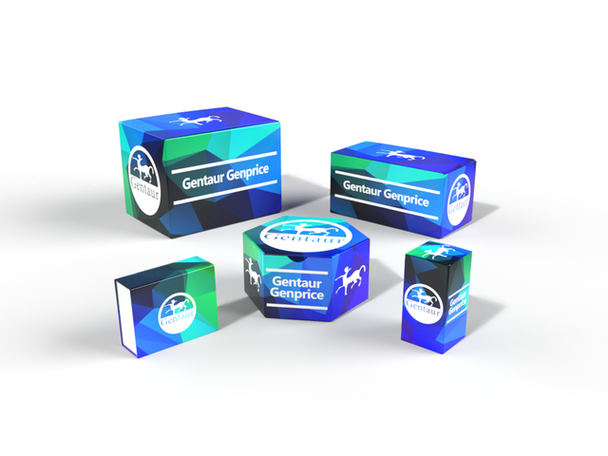749
Rat Vitamin D3 receptor (VDR) ELISA Kit | KTE100012
- SKU:
- 749-KTE100012
- Availability:
- Usually ships in 5 working days
Description
Rat Vitamin D3 receptor (VDR) ELISA Kit | KTE100012 | Gentaur UK, US & Europe Distribution
Application: This Rat Vitamin D3 receptor (VDR) ELISA Kit employs a two-site sandwich ELISA to quantitate VDR in samples. An antibody specific for VDR has been pre-coated onto a microplate. Standards and samples are pipetted into the wells and anyVDR present is bound by the immobilized antibody. After removing any unbound substances, a biotin-conjugated antibody specific for VDR is added to the wells. After washing, Streptavidin conjugated Horseradish Peroxidase (HRP) is added to the wells. Following a wash to remove any unbound avidin-enzyme reagent, a substrate solution is added to the wells and color develops in proportion to the amount of VDR bound in the initial step. The color development is stopped and the intensity of the color is measured.
Detection Method: Colorimetric
Conjugate: N/A
Sample Type: Cell culture supernatants#Serum#Plasma#Other biological fluids
Assay Type: Multiple steps standard sandwich ELISA assay with a working time of 3-5 hours. It depends on the experience of the operation person.
Kit Component: • Rat Vitamin D3 receptor microplate
• Rat Vitamin D3 receptor standard
• Rat Vitamin D3 receptor detect antibody
• Streptavidin-HRP
• Standard diluent
• Assay buffer
• HRP substrate
• Stop solution
• Wash buffer
• Plate covers
Features & Benefits: Rat Vitamin D3 receptor (VDR) ELISA Kit has high sensitivity and excellent specificity for detection of Rat VDR. No significant cross-reactivity or interference between Rat VDR and analogues was observed.
Calibration Range: Please inquire
Limit Of Detection: Please inquire
Usage Note: • Do not mix components from different kit lots or use reagents beyond the kit expiration date.
• Allow all reagents to warm to room temperature for at least 30 minutes before opening.
• Pre-rinse the pipet tip with reagent, use fresh pipet tips for each sample, standard and reagent to avoid contamination.
• Unused wells must be kept desiccated at 4 °C in the sealed bag provided.
• Mix Thoroughly is very important for the result. It is recommended using low frequency oscillator or slight hand shaking every 10 minutes.
• It is recommended that all samples and standards be assayed in duplicate or triplicate.
Storage Instruction: The unopened kit should be stored at 2 - 8°C. After opening, please store refer to protocols.
Shipping: Gel pack with blue ice.
Precaution The product listed herein is for research use only and is not intended for use in human or clinical diagnosis. Suggested applications of our products are not recommendations to use our products in violation of any patent or as a license. We cannot be responsible for patent infringements or other violations that may occur with the use of this product.
Background: VDR is the nuclear hormone receptor for vitamin D3. This receptor also functions as a receptor for the secondary bile acid lithocholic acid. The receptor belongs to the family of trans-acting transcriptional regulatory factors and shows sequence similarity to the steroid and thyroid hormone receptors. Downstream targets of this nuclear hormone receptor are principally involved in mineral metabolism though the receptor regulates a variety of other metabolic pathways, such as those involved in the immune response and cancer. Mutations in this gene are associated with type II vitamin D-resistant rickets. A single nucleotide polymorphism in the initiation codon results in an alternate translation start site three codons downstream. Alternative splicing results in multiple transcript variants encoding the same protein.
Alternative Names: VDR; NR1I1; vitamin D (1;25-dihydroxyvitamin D3) receptor
Search name: VDR; NR1I1; vitamin D (1;25-dihydroxyvitamin D3) receptor
Tag: VDR






